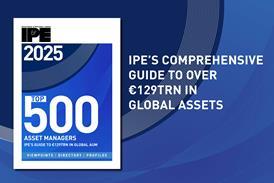Progress towards setting up Pooled Fund Pension Vehicles (PFPVs) continues, with the Guernsey and Jersey authorities giving a yes vote to the plan.
Approaches have been made or are due to be made to 13 other national tax authorities, while Ernst and Young, the firm overseeing the introduction of PFPVs, plans soon to target a second tranche of countries.
Roger Leslie, tax partner at Ernst & Young, who sits on the PFPV committee, is upbeat about progress being made although he does identify a few sticking points in adapting to some countries’ tax legislation and with the type of accountancy procedure to be employed in the UK.
He is co-ordinating the effort from London, with local Ernst & Young offices tailoring the basic letter and information pack to their situation. Leslie admits that in a couple of countries, notably Italy, they are totally bogged down. The other countries and territories in the first tranche are Australia, Belgium, Canada, France, Germany, Italy, Isle of Man, Japan, Netherlands, New Zealand, Ireland, Switzerland and the US.
He adds: Offices are localising the letter and applying the local tax regime, trying to anticipate and deal with any questions before they are asked.”
The firm is also overseeing the accountancy procedures to be employed, with some suggestion that PFPVs are being overshadowed by the interest surrounding open-ended investment companies (Oeics). There are, says Leslie, two camps but he obviously has a preferred route.
“There is a camp thinking about running a PFPV as it should be run: conceptually, with a complete see-through in daily accounting,” he says.
The second route is running a PFPV on a unit trust accounting system, requiring what Leslie describes as “a horrible thing called equalisation”.
This is a unit trust concept that allows a calculation of earnings for investors who join late or leave early.
Leslie adds: “Equalisation is a unit trust concept, an averaging concept, but it is one that isn’t applied accurately in the unit trust industry. In other words each unit holder ends up getting the same adjustment when they all should get different ones.”
The answer for PFPVs is, in the jargon, to operate real-time equalisation, and this will require liaison with the Treasury at a time when it is busy with Oeics.
However, despite these problems, Leslie remains upbeat, saying that a great deal of interest has been generated and that any difficulties are surmountable.








No comments yet